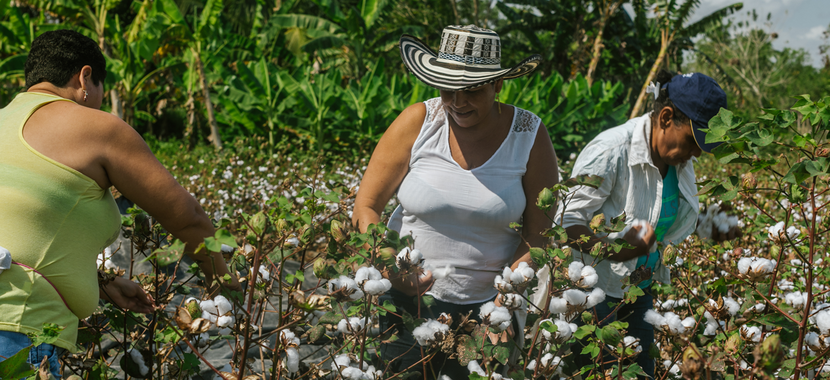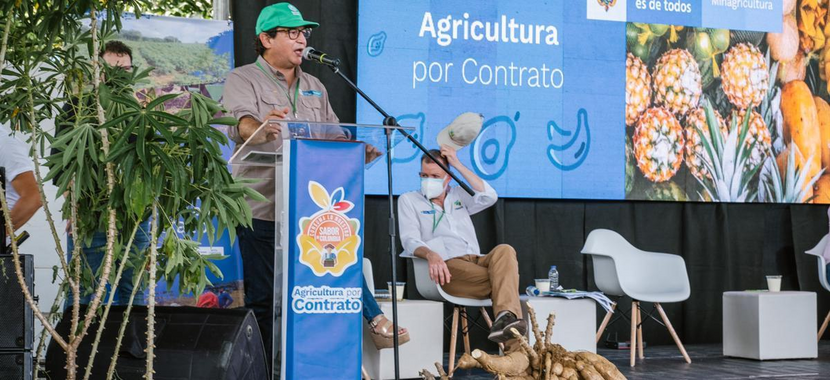International cooperation on the Colombian countryside for the country’s economic reactivation
The Colombian economy suffered a contraction due to the COVID-19 pandemic effects, passing from average GDP growth of 2.9% in 2018 to -6.9% in 2020, the lowest level in the country's history. However, the agricultural sector showed the best performance among all the economic sectors, being the only one that grew 2.8% with a total contribution of 6.8% to the total GDP in 2020. This can be explained by the job generation of the agricultural sector that reached 3,3 million employees, which represent 16.2% of the total employment in Colombia. These figures indicate that the agricultural sector is a powerhouse that is boosting the economic reactivation and has a positive impact within rural areas, where 24% of the national population lives. This article presents how international cooperation funds are being spent in Colombia, what the current priorities and needs in the rural sector are and the new approach of Colombian government regarding international cooperation funds and actions.

Colombia’s accession to the Organization for Economic Cooperation and Development - OECD means that it is now classified as a middle-income country and, therefore, funds from international cooperation are less available. However, the need for recovery in countries severely affected by COVID-19 has been highlighted in the OECD, and particular situations such as the peace agreement with the FARC guerrilla and the country’s importance for biodiversity conservation have contributed to maintaining the interest in Colombia. Traditionally, the main countries that support Colombia within the framework of international cooperation have been Norway, Germany, and the United Kingdom with a joint 44% of the total amount of international cooperation resources, followed by the United States (11.7%) and the European Union (6.6%). These resources have been destined especially to financial services and local government support (57%), technical assistance (31%), and donations in kind with equipment, instruments and infrastructure (8%).
Nowadays, the international cooperation resources after the signing of the peace agreement have been oriented to improve small farmers’ incomes and agricultural productivity, where 93.4% of resources directed to rural development programs were addressed at the peace agreement’s fulfillment. Of those funds 23.87% were allocated to achieve the “Comprehensive Rural Reform” and 66.5% executed in PDET areas (post-conflict zones). In those purposes, the largest donor has been the United States (76%), followed by Canada (10.6%) and European Union (4%), with special focus on the Multipurpose Cadaster and Cooperative Economy’ themes.
For that reason, PDET areas have been identified as an opportunity for a new international cooperation approach that could bring additional (development) cooperation resources to the country. Likewise, this situation presents an opportunity for local governments to seek alternative areas to summon cooperation funds and convey them to places where the resources' distribution is insufficient (and inefficient). International cooperation resources within the country have traditionally been concentrated in the main cities while rural areas have not had equal participation, especially because of factors such as public order, low institutional presence, and higher risk of corruption.
In consequence, the Ministry of Agriculture and Rural Development - MADR has launched a program related to a new international cooperation strategy for the Colombian countryside based on the importance of the recent resources' allocation in this sector. This strategy is a roadmap led by the International Affairs Department of that Ministry that will guide the donors’ under the framework of a multi-level dialogue through participation and consultation roundtables. This proposal seeks to generate real impacts on commercialization and agricultural extension services through a finance program of COP 130 million for inputs, supplies, and machinery acquisition. There are other cross-cutting initiatives such as job formalization, climate change, gender studies, and peace policies.

Striving for a more effective dialogue with donors, a meeting with three types of approaches is proposed: 1) Political Dialogue led by the Ministry of Foreign Affairs of Colombia and high-level diplomatic authorities to appropriate lobby and policy development, 2) Local Dialogue led by governments and local authorities, led by the MADR, to define priorities and special needs within communities, and 3) Technical Dialogue led by beneficiary entities for the proper execution of resources. The strategy’s implementation started with the official presentation for governments, international cooperation organizations, international institutions and other interested parties, and will continue with institutional monitoring roundtables and dialogue and agreement places.
According to the socialization of the strategy, the expected results aim at three priority policies: Rural Development, Social Organization of Production, and Modernization of the countryside. The Colombian economy reactivation is directed towards a more competitive and sustainable countryside integrating all the stakeholders involved in the agricultural sector, including international partners, to leverage actions for the benefit of rural producers prioritizing political and technical dialogue with donors that will solve the identified needs of the Colombian agricultural sector.